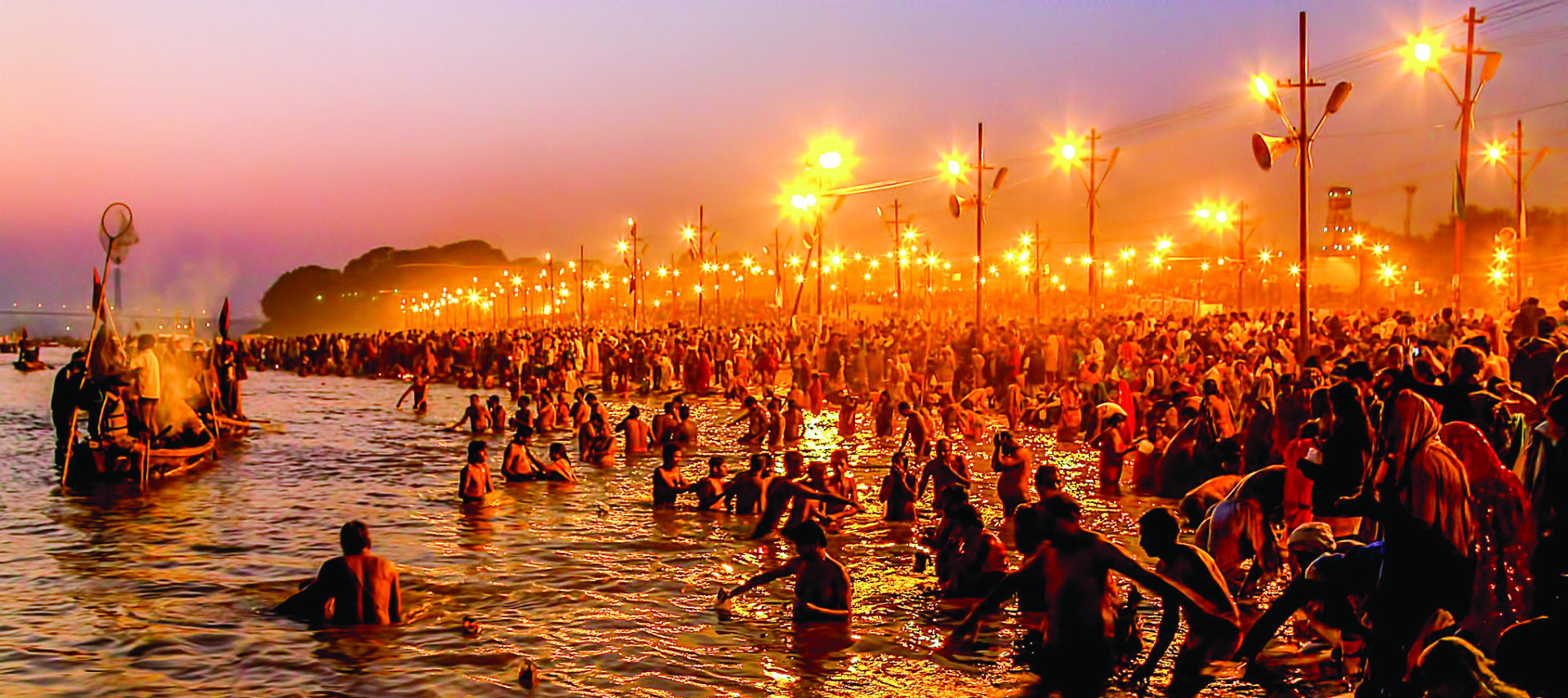At the core of spirituality lies the truth: ‘I am an eternal soul, not this body.’
The Maha Kumbh Mela celebrated at the confluence of the Ganga, Yamuna, and Saraswati, is a divine congregation where millions come seeking purification and spiritual renewal. It is a reminder of the soul’s eternal journey, entangled in karma, and yearning for spiritual cleansing and liberation.
At the core of spirituality lies the truth: “I am an eternal soul, not this body.” The soul is the seat of our intentions, thoughts, feelings, actions, and “sanskars”.
Every moment, we souls engage in karma which encompasses our intentions, thoughts, words, and actions:
=When we are soul conscious, our karmas are divine and reflect our original qualities: purity, peace, love, happiness, wisdom, power, and bliss.
=When we forget our identity as souls and identify with the body—its gender, relationships, roles—we fall into ego consciousness (body consciousness). This propels us to engage in impure karmas referred to as sins or vices, such as lust, anger, greed, attachment, ego, jealousy, hatred, sorrow, deceit, laziness, and carelessness. These sins distance us from our original qualities.
The journey of souls unfolds in a cyclical pattern through four ages: Golden Age (Satyug), Silver Age (Treta Yug), Copper Age (Dwapar Yug), and Iron Age (Kali Yug). In the Golden Age, we are naturally soul conscious and hence are completely pure. By the Iron Age, ego consciousness dominates and vices bind us in suffering. We carry these vices into subsequent lifetimes as karmic debts. Today, at the peak of Iron Age, our vices and karmic debts have intensified. So we souls long for purification.
“Kumbh” means pot, while “Mela” means fair. According to the scriptures, Lord Vishnu spilled drops of the nectar of immortality (“amrit”) from a kumbh at Nashik, Prayagraj, Ujjain, and Haridwar. Pilgrims bathe in the rivers at these four sites during the Kumbh Mela, hoping for their sins and karmic debts to be washed away.
The desire is for cleansing of the soul, but due to body consciousness we physically immerse our body in the sacred waters. While the intention is sincere, we need to do more—we need to cleanse the soul. Purification of the soul happens when we immerse ourselves in the Ocean of Purity, meaning when the soul connects with the Supreme Soul, God, who is the Ocean of Purity.
In the Golden Age, souls were 100 per cent pure, but over several lifetimes, body consciousness has eroded our purity and left us at our lowest spiritual state. This decline renders it impossible for us to achieve “mukti” or liberation and return to Paramdham, the Soul World. It has also stopped us from attaining “Jeevan mukti” or liberation in life and transition into the Golden Age.
Today we are in a period called the Confluence Age, a brief transitional phase between the Iron Age and the Golden Age. During this time, the Supreme Soul, God, descends into this world to guide, energize, and purify us. When we connect to God through daily meditation, immerse ourselves in His divine knowledge and inculcate His teachings, we shift from ego consciousness to soul consciousness. Such transformation dissolves vices and restores our purity. This completes the purification of the soul.
The Maha Kumbh Mela offers valuable lessons:
- Collective vibrations: Millions gathering with a shared intention of purity and generating powerful collective vibrations, inspires a shift towards soul consciousness. It encourages us to be a part of collective vibrations on a daily basis. At Rajyoga centres worldwide, collective vibrations are created daily through meditation, fostering an atmosphere of purity.
- Learning: Devotional practices at the Kumbh Mela inspire introspection and renewal. At Rajyoga centres, souls immerse themselves every day in the Ocean of Knowledge flowing from the Supreme Soul and imbibe spiritual principles. This guides them to create elevated karma in the present and thereby become liberated from past karmic baggage.
- Oneness: Convergence of diverse pilgrims reiterates that all souls are equal. By practising soul consciousness, we perceive the world as one family, transcending barriers of gender, religion, and nationality. This nurtures universal brotherhood.
- Eternal pilgrimage: While the Kumbh offers a physical pilgrimage for the body on a set schedule, we can embark on a pilgrimage for the soul on a daily, ongoing basis—a pilgrimage of God’s remembrance at each moment of the day. It means we can carry out our responsibilities while our mind is constantly immersed in the Ocean of Purity (remain in God’s remembrance). We then embrace a meditative lifestyle as karma yogis where our every action becomes a source of purity. Through the pilgrimage of remembrance, the soul purifies itself, attaining “mukti” by returning to Paramdham, followed by “Jeevan mukti” in the Golden Age.
B.K. Shivani is a well-known motivational speaker and Rajyoga teacher.

